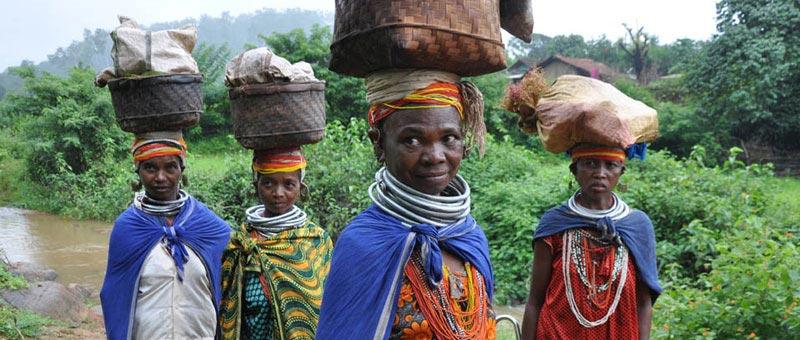Tribes of Odisha
Of all the states of India, Orissa has the largest number of tribes, as many as 62. in terms of percentage they constitute an impressive 24 percent of the total population of the state. These tribes mainly inhabit the Tribes of Odisha and Eastern Ghats hill range, which runs in the north-south direction. More than half of their population is concerned in three districts of Koraput (undivided), Sundergarh and Mayurbhanj.
Since the age of Ramayana and Mahabharata, the tribals occupy a putative role and the Jagannath cult of Orissa is interwoven with the tribal religion which has given genesis to a paradigm of assimilation. The Sabaras of Orissa are the early worshipers of Lord Jagannath and till today they have been performing dominant role in the religio-cultural norms of Jagannath temple. Tribals of Orissa areknown as Adivasi, Vanabasi, and Girijana. They are described as aboriginals of Orissa in Anthropological literature. The Adivasi (aborigine), Vanabasi (forest dweller) and Girijana (mountain dweller) constitute 22.13% population of Orissa.
Out of 62 notified Scheduled Tribes, only 8 Scheduled Tribes are declared as Primitive Tribal Groups by the Government of India. Those tribes are Juang, Bondo Poraja, Lodha, Didayi,Mankidia, Birhor, Kharia and Soura.
The economic life of the Primitive Tribal Groups revolve round the forest and the PTGs of Orissa are not out of it.Forest nurtures their life and the biotic and abiotic components of forest ecology fulfill their socio-economic, bio-social, religio-cultural and psycho- social needs. They collect their basic amenities from the forest and their economic life is interwoven with the forest eco-system.
Many tribes, for instances, the Juanga, Bhuiyan, Saora, Dharua and Bonda, practice what is called shifting cultivation or Podu Chasa, also known as slash and burn. They select a plot of land and generally on a mountain slope, slash down all the trees and bushes and burn them to ashes. Spreading the ashes evenly over the land, they wait for the rains before planting their crops. Due to cultivation for two or three seasons on one plot of land the soil gets depleted, so the Tribes of Odisha move on. It is a way of life for them.
The core of tribal culture, the youth dormitory, is the largest hut in the village. It has only three walls, profusely decorated with symbols representing animals. The fourth side is open. By night dormitory is home to the youth of the village. But before and after a hard day’s work, people gather here to chat and relax. The council of elders meets here too to discuss matters relating to the welfare of the village. The open space in font of the dormitory is where youths and maidens dance with abandon every evening.
The weekly markets or HAAT is also a life line for Tribes where they not only batter their weekly needs but also a great meeting point to share a drink .The Tribes of Odisha are also known for their festivals which is mostly connected to harvesting or crops as per season.They pray mother earth and sky like animist and believes in sacrifice.
Wednesday Dunguria Kondh weekly market, Thurs day Bonda tribe market near Macckund (Desia) , Friday Kundli Market , Saturday Baligaon market is worth visiting.


